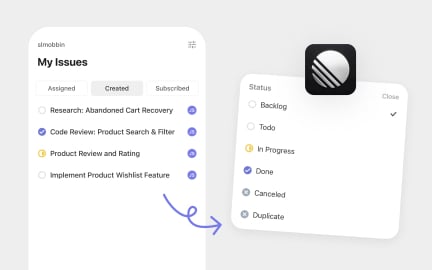System Integration
System integration connects tools, platforms, or services so data can move reliably across systems, improving product performance and scale.
What is System Integration?
Your different software systems and tools don't communicate effectively with each other, creating data silos, manual workarounds, and inefficient processes that waste time and create opportunities for errors and inconsistencies.
Most organizations implement software solutions independently without systematic integration planning, missing opportunities to create seamless workflows and automated processes that would improve efficiency and reduce manual coordination overhead.
System integration is the systematic process of connecting different software applications, databases, and technology platforms to enable automated data sharing, coordinated workflows, and unified functionality that optimizes operational efficiency across organizational systems.
Organizations with effective system integration achieve 60% reduction in manual data entry, 45% faster process completion, and significantly lower error rates because information flows automatically between systems rather than requiring manual coordination and duplicate data management.
Think about how companies like Salesforce create integrated CRM ecosystems that connect sales, marketing, and customer service data automatically, or how e-commerce companies integrate inventory management with ordering systems to prevent overselling and optimize fulfillment processes.
Why System Integration Matters for Operational Efficiency
Your team productivity suffers because different systems don't share information automatically, leading to manual data entry, inconsistent information across platforms, and inefficient processes that could be optimized through systematic integration.
The cost of poor system integration compounds through every business process that involves multiple software tools. You get data inconsistencies that cause decision-making problems, manual work that could be automated, and operational inefficiencies that slow business growth and competitive responsiveness.
What effective system integration delivers:
Higher operational efficiency because automated data sharing eliminates manual data entry and reduces time spent coordinating information between different systems and platforms.
When systems integrate effectively, information flows automatically rather than requiring manual coordination that creates delays and opportunities for human error.
Better data consistency and accuracy through automated synchronization that ensures information is current and accurate across all systems rather than becoming outdated or inconsistent due to manual update processes.
Faster business processes because integrated workflows eliminate delays caused by manual data transfer and enable automatic task progression that speeds overall process completion.
Enhanced decision-making capability as integrated systems provide comprehensive information access rather than requiring manual data compilation from different sources before analysis and strategic planning.
Improved customer experience through integrated systems that provide consistent service and information across different customer touchpoints and interaction channels.
Advanced System Integration Strategies
Once you've established basic system integration capabilities, implement sophisticated integration architecture and optimization approaches.
Enterprise Service Bus and Middleware Architecture: Implement sophisticated integration platforms that coordinate multiple system connections through centralized integration management rather than point-to-point connections that become difficult to maintain.
Real-Time Integration and Event-Driven Architecture: Create integration systems that process data changes immediately rather than batch processing that creates delays in information synchronization across systems.
Cloud Integration and Hybrid System Coordination: Coordinate integration between on-premise systems and cloud platforms that require different security, performance, and connectivity approaches.
Integration Monitoring and Performance Optimization: Use advanced monitoring tools that track integration performance, identify bottlenecks, and optimize data flow efficiency across complex system architectures.
Recommended resources
Courses

Accessibility Foundations

Wireframing

Introduction to Figma
Lessons

Implementing Early Warning Systems

Creating and Managing Cross-Functional Workflows








